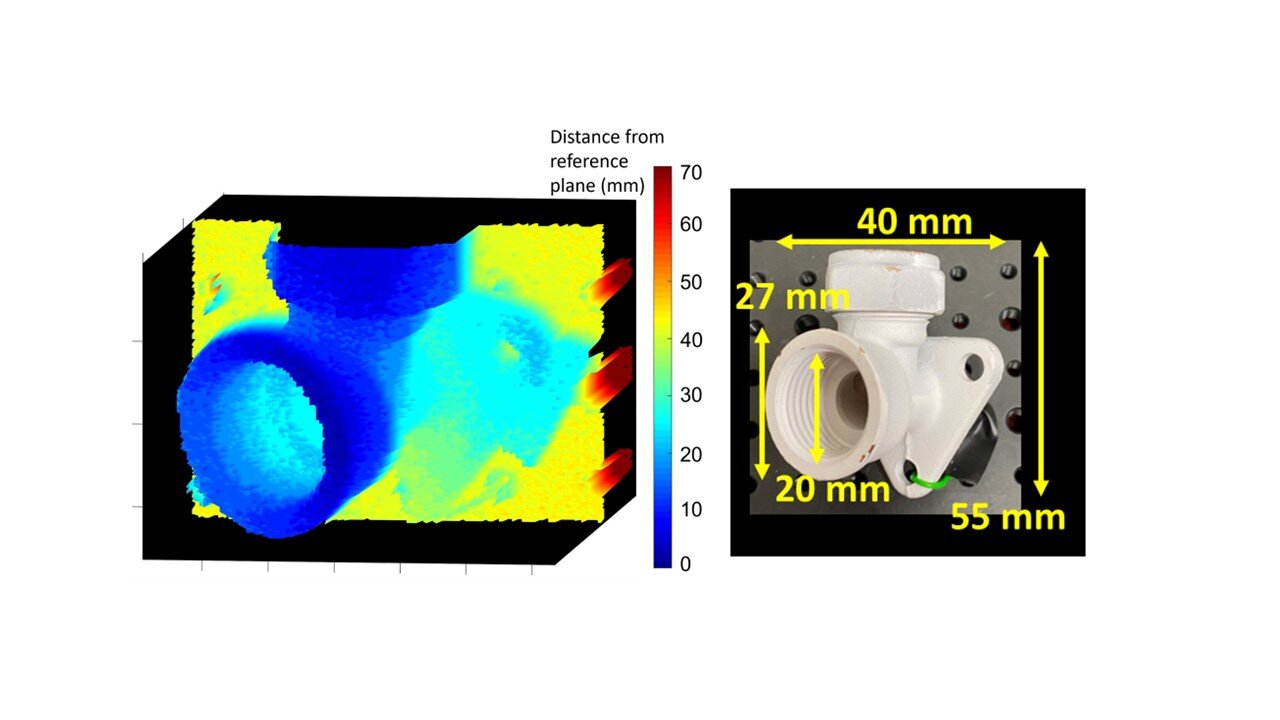

Researchers have developed a prototype lidar system using quantum detection technology to obtain 3D images while submerged underwater. The system has high sensitivity, which may allow it to capture detailed information even in low-light conditions found underwater. The technology could be useful for a range of applications, including inspecting underwater installations, monitoring or surveying submerged archaeological sites, and for security and defense applications. Obtaining 3D images through ocean water can be challenging due to light limitations and the scattering of light by particles in the water. However, single-photon detection, which is a quantum-based technique, allows very high penetration and works even in low-light conditions.
The lidar system uses a green pulsed laser source to illuminate the scene of interest. An array of single-photon detectors detects the reflected pulsed illumination, allowing ultrafast low light detection and greatly reducing measurement time in photon-starved environments such as highly attenuating water. By taking time-of-flight measurements with picosecond timing resolution, the researchers can routinely resolve millimeter details of the targets in the scene. The approach also allows them to distinguish the photons reflected by the target from those reflected by particles in the water, making it suitable for performing 3D imaging in highly turbid waters where optical scattering can ruin image contrast and resolution. To retrieve and process the data necessary to reconstruct the 3D image in a short time, the researchers developed algorithms specifically for imaging in highly scattering conditions and applied them in conjunction with widely available graphics processing unit (GPU) hardware.
The researchers optimized the optical setup on a laboratory optical bench before connecting the lidar system to a GPU to achieve real-time processing of the data while also implementing a number of image processing approaches for three-dimensional imaging. Once the system was working properly, they moved it to a tank that was 4 meters long, 3 meters wide, and 2 meters deep. With the system submerged in the water, the researchers added a scattering agent in a controlled manner to make the water more turbid. Experiments at three different turbidity levels demonstrated successful imaging in controlled highly scattering scenarios at distances of 3 meters.
The researchers are working to reduce the size of the system so that it can be integrated into an underwater vehicle. Through the UK Quantum Technology Hub Network and InnovateUK, the researchers are partnering with industry to make the technology accessible for a range of underwater applications. The approach and image processing algorithms could also be used in a wider range of scenarios for improved vision in free space such as in fog, smoke, or other obscurants.
Natural gas leaks are a growing concern in both urban and rural settings, with potential…
Recent groundbreaking research at the University of Vienna has unveiled a novel interplay of forces…
In recent years, perovskites have garnered significant attention in the fields of materials science and…
For decades, astronomers have probed the depths of the Milky Way, grappling with two perplexing…
Foreign direct investment (FDI) in developing nations has long been heralded as a path to…
As spring beckons in April and May, stargazers have the unique opportunity to witness nature's…
This website uses cookies.